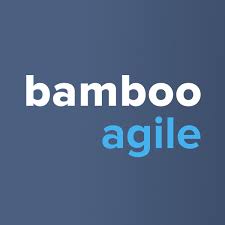Atlassian has built a full ecosystem of tools that take developers from planning to deployment without switching contexts every five minutes. Instead of juggling disconnected apps, you get a toolkit that fits together naturally – helping teams track issues, automate delivery, and stay on top of changes. In this guide, we’ll look at the key Atlassian DevOps tools that power modern workflows, what each one does, and how they work together to keep projects moving fast and clean.

AppFirst – A Developer-First Alternative to Traditional Atlassian Toolchain
AppFirst takes a fresh approach to DevOps by flipping the usual focus. Instead of making developers spend time on Terraform scripts, VPC setups, or cloud configurations, they let teams describe what their app needs, things like compute, database, or networking, and handle everything else automatically. Their platform provisions secure, compliant infrastructure behind the scenes while keeping full transparency over costs, security, and environment changes. It’s built to remove the constant friction that comes with managing infrastructure and to give teams the breathing room to focus on building products.
They design AppFirst for engineering teams that want speed without cutting corners on security or compliance. The platform runs across AWS, Azure, and GCP, with options for SaaS or self-hosted deployment, and includes built-in monitoring, logging, and auditing. It’s a developer-first setup that reduces overhead, keeps teams in control of their applications, and maintains consistency across every cloud. The idea is simple: you build the product, they take care of the infrastructure.
Understanding Atlassian and Its Role in DevOps
Atlassian is a company known for creating tools that help software teams plan, build, and ship better products together. Their ecosystem is built around collaboration and visibility – helping developers, project managers, and operations teams work in sync instead of in silos. Over the years, Atlassian has expanded from project tracking with Jira to a full suite that covers the entire software lifecycle: planning, coding, testing, deployment, and incident management. The idea is to give teams one connected environment where every part of development: from writing code to fixing production issues, happens transparently.
Their DevOps tools are designed to bridge the gap between development and operations. Jira helps teams plan and track progress, Bitbucket manages code and automates CI/CD, Bamboo handles continuous delivery, and Confluence brings documentation and communication together. Tools like Compass and Statuspage extend this by offering visibility into system health and better incident communication. Together, they form an ecosystem where teams can manage everything from a single source of truth – reducing friction, improving release speed, and keeping everyone aligned throughout the process.
Contacts:
- Website: www.atlassian.com
- Phone: +1 415 701 1110
- Address: 350 Bush Street Floor 13 San Francisco, CA 94104 United States
Top Atlassian DevOps Tools
1. Jira
Jira sits at the core of Atlassian’s DevOps toolkit, connecting planning, tracking, and delivery in one place. It helps teams manage projects of any scale by organizing work into issues, tasks, and goals that can be tracked from idea to deployment. Its structure allows developers, project managers, and stakeholders to stay aligned without needing separate platforms. Integrated with Rovo AI, Jira automates repetitive updates, breaks down big ideas into actionable tasks, and summarizes project activity for quick decision-making.
They use Jira to keep their workflow predictable and visible. The tool’s automation features handle administrative overhead, letting teams focus more on impact and less on manual coordination. Jira’s integrations with tools like GitHub, Figma, and Zoom make it a central hub where all parts of a project can connect, providing a single source of truth for progress and accountability.
Key Highlights:
- AI-powered task and project planning
- Real-time tracking of progress and risks
- Seamless integration with development and communication tools
- Automation for recurring tasks and updates
- Goal alignment to connect strategy and execution
Perfect For:
- Development teams managing complex project lifecycles
- Organizations using multiple tools needing one central coordination platform
- Teams looking to automate reporting and status updates
- Cross-functional groups needing transparency in shared projects

2. Bitbucket
Bitbucket provides the coding and CI/CD backbone of Atlassian DevOps tools. It allows teams to host, manage, and review source code with built-in pipelines for automated testing and deployment. Developers can handle everything from version control to release without switching platforms, since Bitbucket links directly to Jira and Confluence. It supports team-wide collaboration by embedding context from other Atlassian tools and integrating with third-party systems like Snyk or Sonar for code security.
They use Bitbucket to standardize code quality and security while keeping delivery continuous. With native CI/CD pipelines and AI-assisted code reviews, teams can reduce manual work and maintain consistency across environments. Granular access controls, branch permissions, and automated merge checks ensure compliance without adding friction. The result is smoother collaboration between developers, operations, and business teams within one shared ecosystem.
Key Highlights:
- Integrated CI/CD pipelines within the Atlassian platform
- AI-assisted code review and pull request summaries
- Customizable merge checks and security scanning
- Centralized permissions for code quality control
- Direct connection with Jira and Confluence for full project visibility
Perfect For:
- Development teams managing repositories and deployments in one place
- Organizations enforcing internal code quality and compliance standards
- Teams seeking tighter integration between code and project tracking
- DevOps pipelines requiring automation and security monitoring

3. Confluence
Confluence acts as the shared workspace of Atlassian’s DevOps environment, where documentation, knowledge, and collaboration come together. Teams use it to draft plans, record processes, and share ideas through live documents, whiteboards, and structured databases. AI integration helps summarize content, generate drafts, and surface relevant pages, so information stays accessible without digging through folders or chat threads.
They rely on Confluence to connect development and operations beyond code. It provides the context behind decisions, designs, and retrospectives that shape each release. When linked with Jira and Bitbucket, Confluence becomes the narrative layer of the DevOps process—turning isolated tasks and commits into shared understanding and traceable progress.
Key Highlights:
- AI-powered workspace for documentation and collaboration
- Live editing, whiteboards, and structured databases
- Seamless integration with Jira, Bitbucket, and third-party tools
- Search and summarization across all connected apps
- Templates for project plans, product docs, and retrospectives
Perfect For:
- Teams that need a shared knowledge base connected to active projects
- Cross-functional groups working on documentation and delivery together
- Organizations wanting searchable, organized internal knowledge
- DevOps teams keeping decision history and technical documentation in sync

4. Compass
Compass works like a map for your entire software ecosystem. It gives teams one place to catalog everything they build – from services and APIs to libraries and integrations. Instead of searching through endless repos or documents, developers can just check Compass to see who owns what, how healthy each component is, and where things might need attention. It basically brings structure to the chaos of modern engineering setups.
They use Compass to make their daily work smoother and a bit less stressful. The dashboards help track software health and team performance, while built-in alerting and on-call tools mean issues get noticed and handled faster. Because it connects with other Atlassian and third-party tools, Compass quietly ties the whole operation together so developers can focus on building instead of chasing down information.
Key Highlights:
- One catalog for all services, APIs, and components
- Visibility into ownership and system health
- Integrates easily with internal and third-party tools
- Includes alerting and on-call features
- Dashboards that help monitor performance across teams
Perfect For:
- Engineering teams juggling lots of microservices
- Organizations wanting a clearer view of what’s running and who owns it
- DevOps teams that need built-in alerting and on-call coordination
- Developers who want less context switching and smoother workflows

5. Bamboo
Bamboo is Atlassian’s tool for continuous integration and delivery, basically, it’s the system that helps teams get their code built, tested, and deployed automatically. Once it’s set up, the process feels almost invisible. Code changes trigger builds, tests run automatically, and deployments happen without someone needing to babysit the process. It’s reliable, steady, and plays nicely with the rest of Atlassian’s stack.
They use Bamboo to keep their release cycles clean and predictable. It connects directly to Bitbucket and Jira, so you can trace every step from feature request to production. The setup supports Docker, AWS CodeDeploy, and a range of custom environments, which makes it flexible enough for most teams. In short, it keeps everything running smoothly behind the scenes while developers stay focused on shipping code.
Key Highlights:
- Automates builds, tests, and deployments
- Keeps projects visible across Bitbucket and Jira
- Reliable, scalable pipelines for any size team
- Works with Docker, AWS CodeDeploy, and more
- Integrates with Opsgenie for faster incident response
Perfect For:
- Teams automating their CI/CD process
- Developers who want fewer manual steps in deployment
- Organizations already using Atlassian’s DevOps tools
- Teams that need a dependable, scalable delivery setup

6. Statuspage
Statuspage helps teams stay open and honest when things go wrong. It’s a simple way to share real-time service updates with users instead of leaving them guessing. Whether it’s a small hiccup or a full-blown outage, teams can post updates, send notifications, and show which parts of the system are affected. It’s not just about broadcasting problems, it’s about keeping people informed so they can plan around them.
They use Statuspage to cut down the flood of support tickets during incidents and avoid sending the same update to dozens of different channels. Support, DevOps, and incident response teams can set up automated updates from their existing monitoring tools, and even show uptime history to highlight reliability over time. For many teams, it’s become a simple but essential part of their communication workflow during high-pressure moments.
Key Highlights:
- Real-time incident and maintenance updates
- Component-level visibility for each part of a service
- Automatic alerts through email, SMS, or in-app messages
- Integration with monitoring, alerting, and chat tools
- Option to display uptime history and reliability metrics
Perfect For:
- Support and IT teams reducing duplicate support tickets
- DevOps teams communicating clearly during outages
- Companies that want to show transparency and reliability
- Organizations managing multiple services or third-party dependencies
Final Thoughts
Atlassian’s DevOps tools cover pretty much every step of the development lifecycle – from planning and coding to deployment, monitoring, and communication. Jira keeps teams aligned and organized, Bitbucket handles code and CI/CD, Confluence connects documentation and ideas, while Compass, Bamboo, Statuspage, and the rest fill in the operational layers that keep things running smoothly. Together, they form a flexible ecosystem that fits how real teams actually work, not just how processes look on paper.
In the end, it’s not about having the most tools, it’s about using the right ones that talk to each other and make your daily work easier. Whether you’re streamlining releases, managing incidents, or just trying to keep everyone on the same page, Atlassian gives teams a practical foundation to build on. And if you’re looking to take that efficiency even further, platforms like AppFirst can sit alongside this stack to remove infrastructure friction entirely, so your team can focus on what really matters: building great software and shipping it fast.


